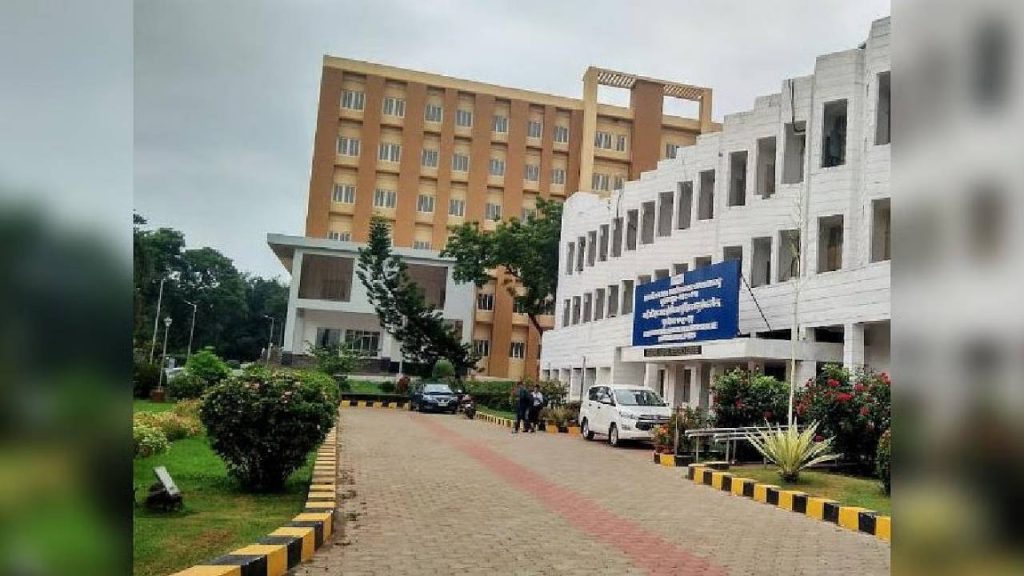The Indian Council of Medical Research (ICMR) and its Regional Medical Research Centre (RMRC) in Bhubaneswar have made a groundbreaking announcement. The advanced malaria vaccine, AdFalciVax, has been developed, tested, and is now ready for tech transfer. This innovative vaccine is set to change the game in the fight against malaria, especially in regions heavily affected by the disease. But how does this vaccine work? Why is it so important, and how will it impact global malaria prevention efforts? In this article, we break it all down, from the science behind the vaccine to the potential for global distribution and commercialization.

RMRC Bhubaneswar Unveils Advanced Malaria Vaccine
| Key Information | Details |
|---|---|
| Vaccine Name | AdFalciVax |
| Developed By | ICMR-RMRC Bhubaneswar |
| Target Parasite | Plasmodium falciparum (the deadliest malaria parasite) |
| Vaccine Type | Dual-stage protection targeting liver and mosquito stages |
| Shelf Life | 9 months at room temperature |
| Cost-Effectiveness | More affordable compared to other malaria vaccines |
| Tech Transfer | Available for companies and manufacturers via Expressions of Interest (EoI) |
| Deadline for EoI Submission | August 17, 2025 |
| Official Source for More Information | ICMR Website |
This new malaria vaccine, AdFalciVax, represents not just a scientific triumph but also a breakthrough in the fight against one of the world’s most dangerous diseases. Malaria continues to cause millions of infections and hundreds of thousands of deaths worldwide each year, mostly in sub-Saharan Africa and South Asia. The World Health Organization (WHO) reports that, in 2020 alone, there were an estimated 241 million cases of malaria globally, leading to 627,000 deaths. A vaccine that can significantly reduce this toll is a huge step forward.
But what makes AdFalciVax stand out? Why is it different from other malaria vaccines already in use, and what role will it play in reducing global malaria cases?
The development of AdFalciVax by RMRC Bhubaneswar is a landmark achievement in the fight against malaria. With its dual-stage protection, room-temperature stability, and cost-effectiveness, it has the potential to make a significant impact on global malaria efforts. As ICMR prepares to transfer the technology to manufacturers, the world eagerly awaits the widespread availability of this game-changing vaccine.
What Is AdFalciVax and How Does It Work?
AdFalciVax is an innovative recombinant chimeric multi-stage malaria vaccine. It targets Plasmodium falciparum, the parasite responsible for the deadliest form of malaria. Unlike other vaccines, which primarily focus on preventing one stage of the parasite’s lifecycle, AdFalciVax works at two different stages of the parasite’s development: the liver stage and the mosquito stage.
This dual-stage approach is revolutionary because it doesn’t just prevent the parasite from infecting the human liver. It also targets the mosquito, which is crucial for the parasite’s transmission. By blocking the parasite’s ability to complete its life cycle in both the human and mosquito hosts, this vaccine has the potential to break the cycle of transmission entirely. This dual-action protection offers a more comprehensive defense against malaria than many current vaccine options.
The vaccine is based on cutting-edge protein engineering, utilizing a safe bacterial host, Lactococcus lactis, to produce the antigens needed to stimulate an immune response. In simple terms, AdFalciVax tricks the body into thinking it’s been infected by malaria, allowing the immune system to build up defenses without causing the disease itself. This method has shown strong promise in preclinical studies, including successful testing with the ICMR-National Institute of Malaria Research and the National Institute of Immunology.
Key Features of AdFalciVax:
- Dual-stage protection: Targets both the human liver and mosquito stages of the Plasmodium falciparum parasite.
- Long shelf life: Can be stored at room temperature for up to 9 months, making it easier to distribute, especially in remote areas.
- Cost-effective: Designed to be more affordable than existing vaccines, reducing the financial burden of malaria prevention in endemic regions.
The Need for a New Malaria Vaccine
Malaria is a mosquito-borne infectious disease that has plagued humanity for centuries. While current efforts, including the RTS,S/AS01 vaccine (commonly known as Mosquirix), have helped reduce malaria deaths, they are far from perfect. The RTS,S/AS01 vaccine, recommended by the World Health Organization (WHO), offers protection against malaria but is not universally effective and requires multiple doses. Additionally, it is expensive and requires a cold chain for storage, which is difficult to maintain in many parts of Africa and Asia.
This is where AdFalciVax comes in. With its dual-stage approach and room-temperature stability, the vaccine offers several advantages over the existing alternatives:
- Higher Efficacy: Targets both the liver and mosquito stages, improving overall effectiveness.
- Storage Flexibility: No need for refrigeration, which means it can be distributed in areas with poor infrastructure.
- Affordability: A lower cost per dose than current malaria vaccines, making it accessible to more people in need.

The Road to Technology Transfer
Now that the vaccine has proven effective in preclinical trials, the ICMR is focusing on technology transfer. The goal is to make AdFalciVax available for mass production and distribution worldwide. To do this, the ICMR is inviting Expressions of Interest (EoI) from manufacturers, organizations, and companies interested in taking over the technology for further development and commercialization.
What Is Technology Transfer?
Technology transfer is the process by which knowledge, expertise, and technology are shared from one organization (in this case, ICMR) to another (such as a pharmaceutical company). This allows companies to produce the vaccine at scale and distribute it to those who need it most.
ICMR’s role will be to provide technical assistance to manufacturers during the production process. This ensures that the vaccine maintains its quality and effectiveness as it moves into commercial production.
The deadline for submitting EoIs is August 17, 2025, and interested parties can find more details and application guidelines on the official ICMR website. This is a significant opportunity for companies in the pharmaceutical and biotechnology industries to contribute to global malaria eradication efforts.
How Will AdFalciVax Be Distributed Globally?
The potential for AdFalciVax to impact global malaria efforts is enormous. With its ability to prevent both human infection and mosquito transmission, this vaccine could become a cornerstone of global malaria control strategies.
Distribution in Remote Regions
One of the key barriers to successful malaria prevention in many parts of the world is the logistical challenge of storing and distributing vaccines. Many regions where malaria is most prevalent lack the infrastructure to keep vaccines cold, which is required for many of the current vaccines. AdFalciVax, with its room-temperature stability, solves this problem, making it much easier to distribute to places that need it most.
Scaling Up Production
Scaling up production will require significant investment, especially in countries with limited resources. However, with affordable production costs, the vaccine has the potential to reach millions of people in high-risk areas, saving countless lives in the process.
Odisha Auto Driver Kills Parents While Drunk, Stays with Bodies Overnight
University Grants Commission Takes Action: Fact-Finding Team Deployed in Odisha Case
Balasore Tragedy Sparks Statewide Shutdown: What to Expect on July 17 in Odisha
FAQs
1. What makes AdFalciVax different from other malaria vaccines?
AdFalciVax targets both the liver and mosquito stages of the malaria parasite, providing more comprehensive protection. It also has a longer shelf life at room temperature and is more affordable than existing vaccines.
2. How will AdFalciVax be distributed globally?
The vaccine will be produced by companies selected through the technology transfer process and will be distributed worldwide, particularly to regions with poor infrastructure. Its ability to be stored at room temperature is a key advantage.
3. What is technology transfer and why is it important?
Technology transfer allows manufacturers to produce and distribute the vaccine at scale. It ensures that the vaccine is made available globally, helping to combat malaria in endemic regions.
4. How can companies get involved with the technology transfer process?
Companies interested in taking over the production of AdFalciVax can submit an Expression of Interest (EoI) to ICMR by August 17, 2025. More details can be found on the ICMR website.






